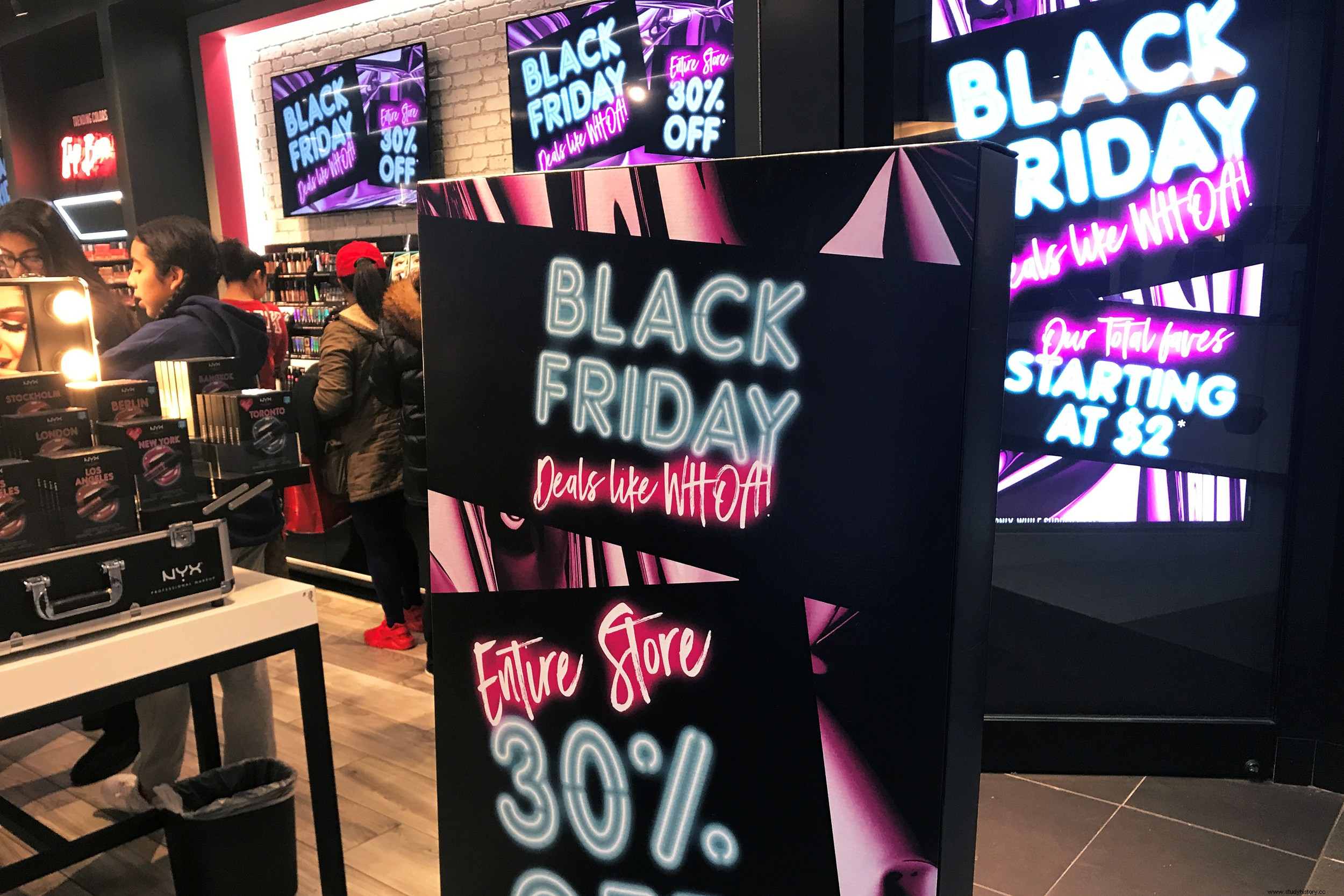What is Black Friday?
Black Friday takes place the day after the United States Thanksgiving holiday. This year it falls on Friday the 26th. November 2021. It has traditionally been a public holiday for many establishments in the United States. Black Friday is also a popular day that is full of special shopping offers and significant discounts for many stores. It originally started in the United States, but now Black Friday's shopping frenzy has spread around the world in stores and online shopping. Most shopping departments offer huge savings on electronics, toys or other in-demand items that will attract consumers to their store front.
Black Friday begins the bustle holiday shopping season on the Friday after Thanksgiving in the United States.
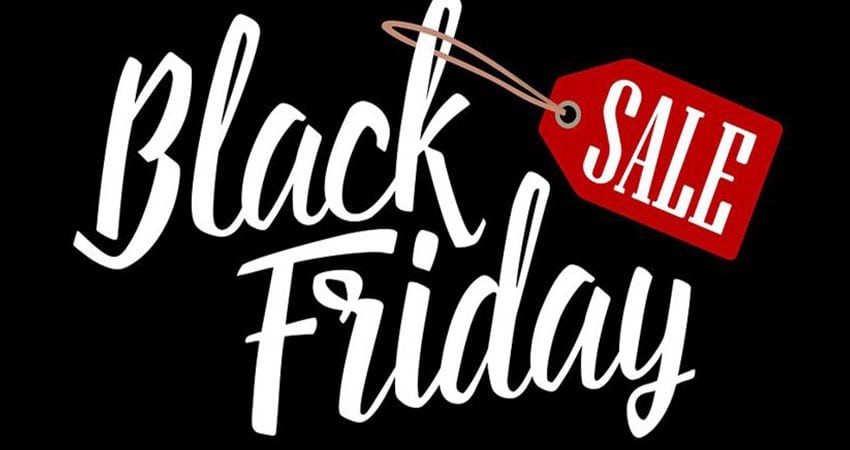
The story of Black Friday
Black Friday
On this day in history, Black Friday was actually a major American stock market crash that occurred on September 24, 1869. It started in September of that year, and ended in late October, when stock prices on the New York Stock Exchange dropped drastically. This was the most devastating stock market crash ever in the history of the United States.
Many American residents migrated to the cities in search of better-paid jobs and more financial stability due to post-war optimism and the false belief in prosperity from America's ever-growing industrial sectors. Many American citizens believed that the stock market would continue to rise forever. They were not aware of the big stock market crash beforehand.
After the Federal Reserve warned American citizens of excessive speculation, a small stock market crash occurred on March 25, 1929. Immediately after this crash, investors quickly began selling their shares. This sales mania revealed the rocky foundation of the stock market and the beginning of the downturn in the US stock market in 1929.
Charles E. Mitchell, a National City Bank owner, announced that his company would provide $ 25 million in credit to help stop the market crash.
Mitchell's decision resulted in a temporary decline in the financial crisis. Short-term interest rates fell from 20 per cent to 8 per cent during this period. However, that was not enough to help the United States' failing economy, which was in serious trouble. The economy that was severely affected by this small stock market crash was car sales and construction costs. Consumers set up huge debts due to easy access to credit from banks and various lenders.
Despite economic warning signs, stock markets rose steadily in June. Profits increased almost unstoppably until the beginning of September 1929, when the Dow Jones average increased by more than 20% between June and September of the same year. By this time, the stock market had been on a nine-year run as the Dow Jones average rose in market value, peaking at 381.17 on September 3, 1929.
Some economists predicted that a crash was on the way. But despite their warnings, no one really took them seriously. Many investors felt optimistic and saw the economy as a practical buying opportunity.
Shortly before the big stock market crash, economist Irving Fisher famously proclaimed:"Stock prices have reached what looks like a permanently high plateau."
It was only after a well-publicized article written by Roger Babson in early September that optimism and economic gains waned. This article predicted that "a crash is coming and it can be amazing."
Babson pauses
"Babson Break" was the label given by the press to describe the first downturn in the economy in September. That was the beginning of the great market crash. However, it was not until October of that year that the severe phase of the crash hit. Many investors viewed "Babson Break" in September as a "healthy correction" and a convenient buying position.
On September 20, 1929, the London Stock Exchange crashed. This crash weakened the optimism of US investors and foreign market investors.
Black Thursday
In mid-October, however, sales intensified as "Black Thursday" caused investors to panic about trading their shares. The market lost 11% of the value of "Black Thursday" alone. The huge volume of stock trading that day caused a volume overload for hours. Investors could not see what stocks were trading for. Several Wall Street bankers met to find a solution to this panic and chaos that arose on the trading floor.
“The meeting included Thomas W. Lamont, acting head of Morgan Bank; Albert Wiggin, Chairman of the Chase National Bank; and Charles E. Mitchell, president of the National City Bank of New York. " Richard Whitney, Vice President of the Exchange, acted on their behalf. With all the bank's resources put together, Whitney placed a bid that was well above the current trading market price of 25,000 1907 US shares. While other traders looked at him, he also made other similar bids on various stocks. He used a tactic that was like one that had put an end to the great panic in 6.38. The Dow Jones average came out with a final average of XNUMX points down for the day.
Black Monday
Black Monday was the name often used when referring to the serious and unexpected global stock market crash. Black Monday took place on October 28, 1929, when nervous investors withdrew all their shares from the market in great panic. This caused the Dow Jones to spiral to a record low of 38.33 points, or just 12.82%.
Black Tuesday
Black Tuesday struck on October 29, 1929, because investors panicked and traded their shares on the New York Stock Exchange in a single day. Wall Street investors traded over 16 million shares. This stock market frenzy led to billions of dollars being lost and wiped out by multiple investors in a single day.
The Dow Jones scored 28.40 points the next day. However, the stock market continued to fall drastically over the next month. It recovered for a few months, then began a downward spiral that led to the lowest level of the 1920s.
In the 1930s, the Dow Jones slowly regained market value. The largest increase occurred in the mid-1930s, when prices remained above the average low seen in the 1930s. It took until November 23, 1954 before the Dow Jones returned to the top market which closed on September 3, 1929.
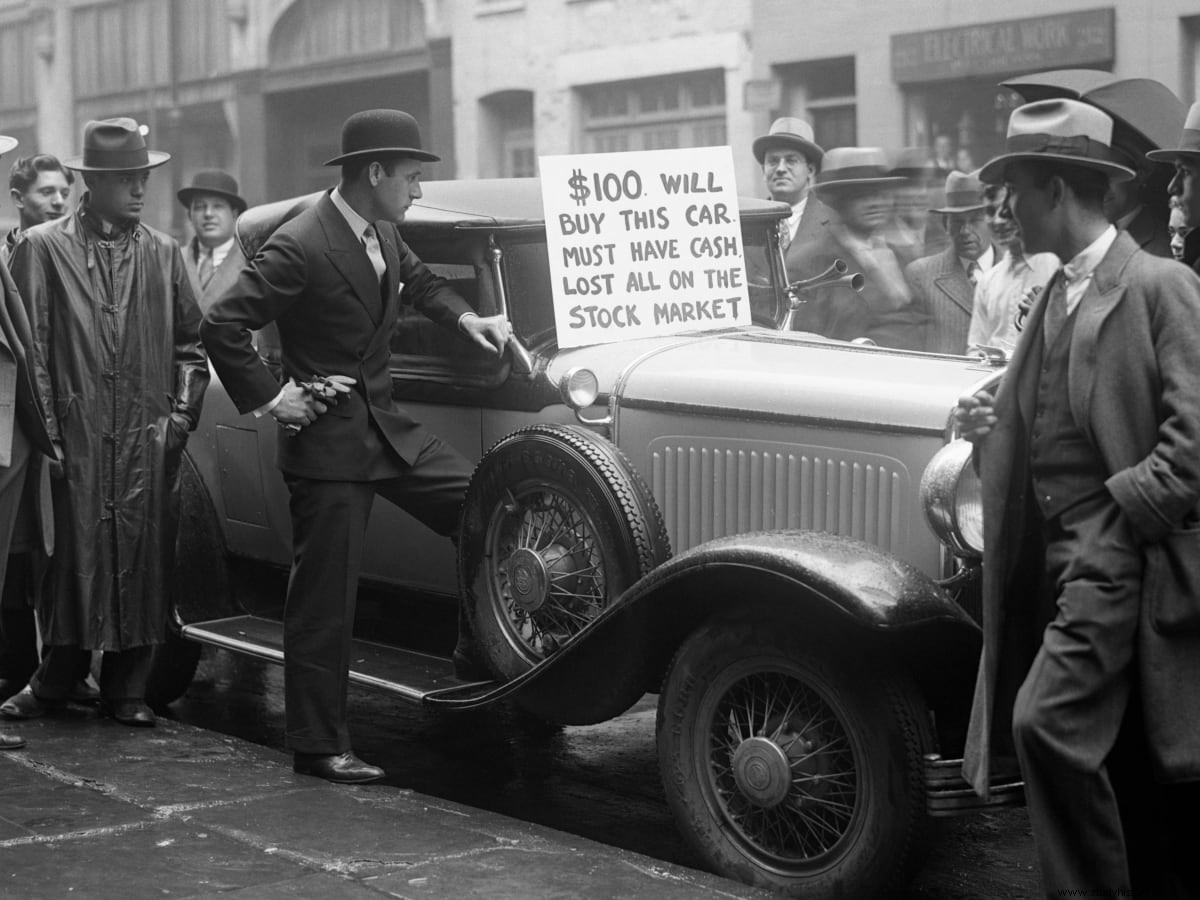
Black Friday Around the World Today
It is common practice in today's competitive corporate market for most retailers to offer special promotions on Black Friday. Some businesses even open their doors to customers during the day before dawn Black Friday to attract more sales. To keep up with the fierce competition, some retailers are expanding Black Friday sales over the weekend and into Cyber Monday or sometimes even longer. Some stores keep Black Friday sales going through the Thanksgiving holiday, while others offer deals into the first week of November.
Some avid shoppers have actually camped out overnight on Thanksgiving to secure a place in line at some of their favorite stores. Some fanatical shoppers even skip their Thanksgiving dinners and camp in parking lots for days or weeks to make exceptional bargains. These Black Friday sales usually continue throughout the weekend, and traditional large-scale stores such as Walmart, Costco and Amazon see a significant increase in sales during the week of Black Friday sales.
Some retailers actually spend an entire year planning their Black Friday sales events. They use Black Friday as a day of the year to plan the sale of doors and get a large number of customers through their doors. Black Friday is an excellent way to offer exceptional prices on stores' inventory. It also allows companies to offer discounts on seasonal items, such as seasonal decorations and Christmas gifts that may not sell very well otherwise.
Retailers also lure customers into their stores by offering huge savings on best-selling items such as televisions, headphones and the latest electronics on the market. This business tactic is used to persuade customers to buy other items when they are already inside the store.
Shoppers can sometimes get pretty mad on Black Friday when they fight over the latest shopping trends on the sales stand. Reports of storms and violence have often occurred on Black Friday. It is stated that in 1983 "consumers with quarrels, fistfights and stampede in stores all over the United States bought Cabbage Patch Kids dolls, this year's must-have toy, which was also considered to be in short supply." "Some even trampled a worker in a store to death on Black Friday in 2008, when crowds of shoppers rushed into the store when the doors opened."
Created many years ago to start the Christmas shopping season, the tradition began with holiday buyers storming storefronts on Thanksgiving for decades now. Many companies give employees Black Friday off as a Thanksgiving holiday, giving them more time for the shopping frenzy.
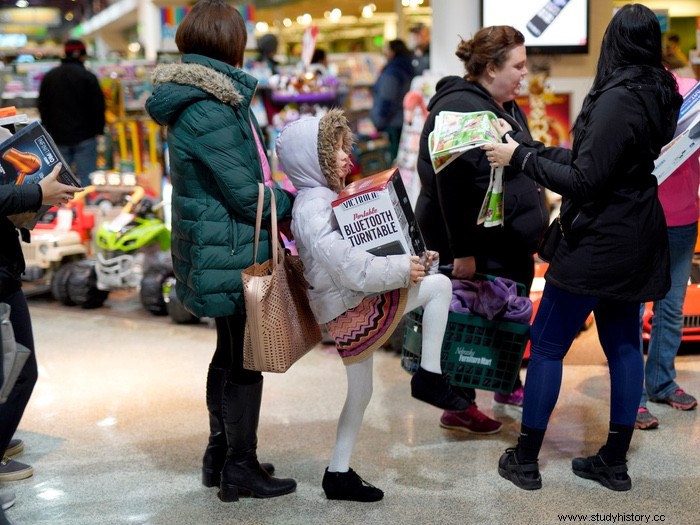
How did Black Friday get its name?
Some people think they called Black Friday after the old accounting practice of recording sales gains with black ink and losses with red ink. The goal of Black Friday is for a company to make enough sales throughout the week to stay in the black all year after.
But even before Black Friday appeared in advertising, the term "black" was used by Philadelphia police officers when referring to the large shopping crowds that day. As early as the 1950s, many crowds of shoppers flooded stores the day after Thanksgiving. Not only were shopping malls in Philadelphia affected, many places around the world were decorated for this special event months in advance. Due to the huge amount of shoppers, the traffic police worked extra shifts on Black Friday to handle all the traffic. The overworked police officers referred to this dreaded holiday as "Black Friday".
The term "Black Friday" quickly spread around the world to describe the long queues and shopping chaos associated with US Thanksgiving shopping. "Black Friday" soon spread around the nation and appeared in TV commercials and radio station broadcasts across the United States and eventually around the world as shoppers trudged out into store fronts in search of bargains.

Black Fridays Evolution
Somehow Black Friday started with a few crowded storefronts and a handful of shoppers fighting for goods and parking spaces into this shopping-crazy frenzy it is today.
Today, Black Friday, is by far the biggest shopping day of the year. Years ago, that title may have gone to the Saturday before Christmas, but no longer. More and more retailers are now entering the sale after Thanksgiving trading day. As Black Friday discounts continue to grow, shoppers around the world can no longer resist the incredible attraction of this magical shopping day.
Black Friday is also getting longer and longer in event size. What started many years ago as a one-day event now lasts for several weeks at a time. Black Friday has started a growing frenzy among many major boxing companies, including Best Buy and K-Mart, among many other major department stores around the world.
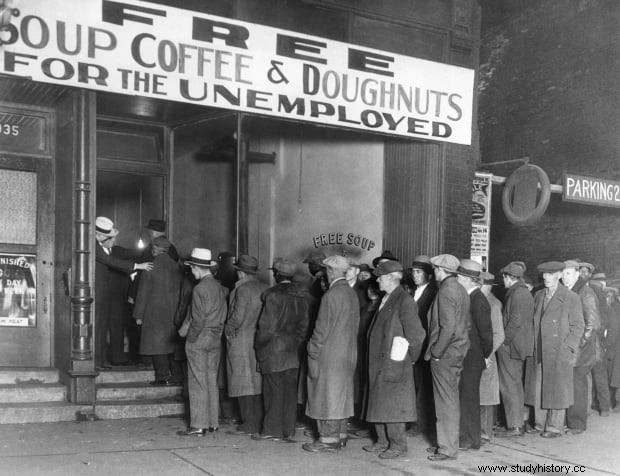
As a conclusion to Black Friday
What happened years ago, the day the stock market crashed, Black Friday has now become a national shopping frenzy that provides significant benefits to the overall economy of today's market. People spend large sums of their hard-earned dollars on Black Friday shopping, giving the entire nation economic benefits.
Some investors see Black Friday as a crucial factor in the overall health of retail nationwide. While others make fun of the nation for spending money so rudely on one day a year, it suggests that Black Friday usage habits only affect short-term gains and losses.
Regardless of differences of opinion, one fact remains that by having holidays at Thanksgiving, shoppers will definitely spend more money. Many businesses will continue to take advantage of this fact as the "Black Friday" shopping craze continues.
In 2015, over 95 million shoppers spent a total of $ 16 billion on a shopping mall in Utua alone. Crazy Black Friday customers overwhelmed security and store employees. They tour through goods in search of the best doorbuster deals. In a Best Buy store in Virginia, angry shoppers got into a fistfight over line shopping.
According to the Black Friday Death Count, there have been a total of 10 deaths and 111 injuries since 2006 on Black Friday in the United States. For some people, these numbers do not differ, and they will continue to shop on Black Friday as long as there are bargains to be found.
